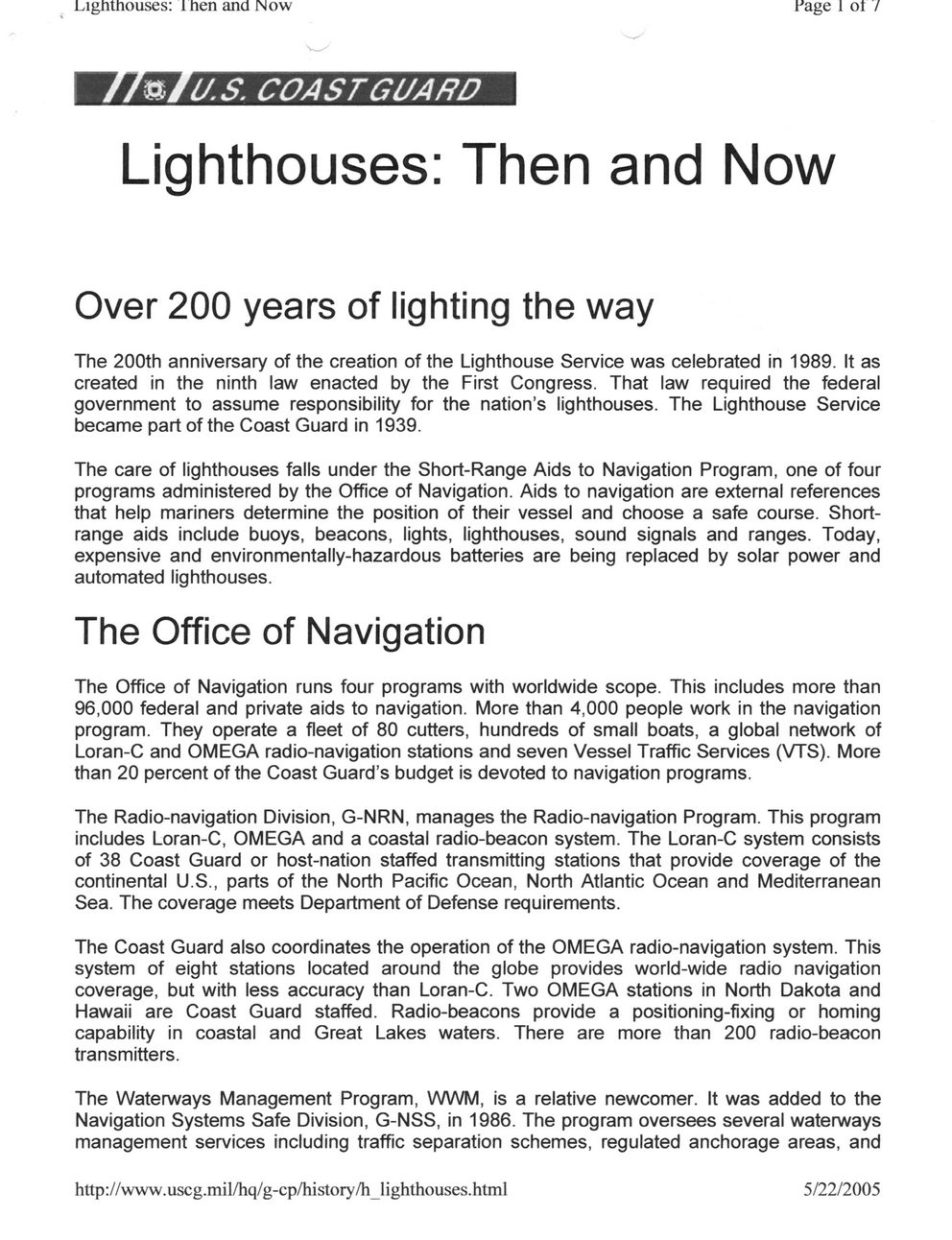This text was obtained via automated optical character recognition.
It has not been edited and may therefore contain several errors.
Lighthouses: 1 hen and Now rage 1 ot 7 m ~ Lighthouses: Then and Now Over 200 years of lighting the way The 200th anniversary of the creation of the Lighthouse Service was celebrated in 1989. It as created in the ninth law enacted by the First Congress. That law required the federal government to assume responsibility for the nation’s lighthouses. The Lighthouse Service became part of the Coast Guard in 1939. The care of lighthouses falls under the Short-Range Aids to Navigation Program, one of four programs administered by the Office of Navigation. Aids to navigation are external references that help mariners determine the position of their vessel and choose a safe course. Short-range aids include buoys, beacons, lights, lighthouses, sound signals and ranges. Today, expensive and environmentally-hazardous batteries are being replaced by solar power and automated lighthouses. The Office of Navigation runs four programs with worldwide scope. This includes more than 96,000 federal and private aids to navigation. More than 4,000 people work in the navigation program. They operate a fleet of 80 cutters, hundreds of small boats, a global network of Loran-C and OMEGA radio-navigation stations and seven Vessel Traffic Services (VTS). More than 20 percent of the Coast Guard’s budget is devoted to navigation programs. The Radio-navigation Division, G-NRN, manages the Radio-navigation Program. This program includes Loran-C, OMEGA and a coastal radio-beacon system. The Loran-C system consists of 38 Coast Guard or host-nation staffed transmitting stations that provide coverage of the continental U.S., parts of the North Pacific Ocean, North Atlantic Ocean and Mediterranean Sea. The coverage meets Department of Defense requirements. The Coast Guard also coordinates the operation of the OMEGA radio-navigation system. This system of eight stations located around the globe provides world-wide radio navigation coverage, but with less accuracy than Loran-C. Two OMEGA stations in North Dakota and Hawaii are Coast Guard staffed. Radio-beacons provide a positioning-fixing or homing capability in coastal and Great Lakes waters. There are more than 200 radio-beacon transmitters. The Waterways Management Program, WWM, is a relative newcomer. It was added to the Navigation Systems Safe Division, G-NSS, in 1986. The program oversees several waterways management services including traffic separation schemes, regulated anchorage areas, and The Office of Navigation http://www.uscg.mil/hq/g-cp/history/h_lighthouses.html 5/22/2005

Lighthouses Chronology-of-Aids-to-Navigation-(01)-(1)